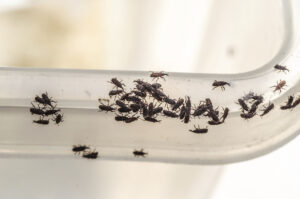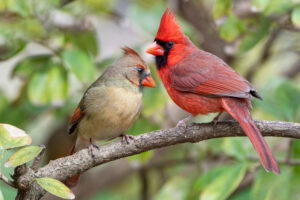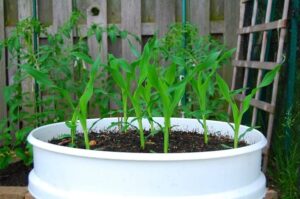
Succulents are a beloved addition to any plant lover’s collection, prized for their unique shapes, low maintenance requirements, and stunning blooms. Among the vast array of succulent varieties, those with pink flowers on long stems stand out for their captivating beauty and elegance. In this article, we will delve into the allure of succulents with pink flowers on long stems, exploring their characteristics, care requirements, and propagation methods.
1. Understanding Succulents With Pink Flowers
a. Introduction to Succulents
Succulents are a diverse group of plants characterized by their thick, fleshy leaves and ability to store water. Originating from arid regions around the world, these plants have adapted to survive in dry conditions by storing moisture in their leaves, stems, or roots.
b. Significance of Pink Flowers
Pink flowers symbolize grace, admiration, and sweetness, adding a touch of femininity and charm to any space. When combined with the architectural beauty of succulents, pink blooms create a striking contrast that enhances their visual appeal.
c. Unique Features of Succulents With Pink Flowers on Long Stems
Succulents with pink flowers on long stems boast a distinctive aesthetic that sets them apart from other varieties. The elongated stems elevate the blooms, allowing them to stand out and command attention. This unique growth habit makes them ideal for hanging baskets, tall planters, or as focal points in succulent arrangements.
2. Popular Species of Succulents With Pink Flowers
a.portulaca pilosa
b.Echeveria ‘Perle von Nurnberg’
Echeveria ‘Perle von Nurnberg’ is a popular succulent prized for its rosettes of powdery lavender-pink leaves. In the spring and summer, it produces tall, arching stems adorned with clusters of pink, bell-shaped flowers. This stunning plant thrives in bright, indirect light and well-draining soil.
c. Sedum ‘Autumn Joy’
Sedum ‘Autumn Joy’ is renowned for its drought tolerance and resilience, making it an excellent choice for xeriscaping and rock gardens. In late summer to fall, this succulent bursts into bloom with clusters of tiny, star-shaped pink flowers atop sturdy, upright stems. Its vibrant blooms provide a valuable food source for pollinators late in the season.
d. Kalanchoe blossfeldiana
Kalanchoe blossfeldiana, commonly known as flaming Katy, is prized for its vibrant, long-lasting flowers that come in various shades, including pink, red, orange, and yellow. This compact succulent produces clusters of colorful blooms on tall, slender stems, adding a cheerful pop of color to indoor and outdoor spaces.
3. Cultivation and Care Tips for Succulents With Pink Flowers
a. Light and Temperature Requirements
Succulents with pink flowers thrive in bright, indirect light, preferably receiving a few hours of direct sunlight each day. However, intense sunlight can cause sunburn, so it’s essential to provide some protection during the hottest part of the day. These plants also prefer warm temperatures and can tolerate mild frost but should be protected from freezing temperatures.
b. Soil and Watering Needs
Well-draining soil is crucial for succulents to prevent waterlogged conditions that can lead to root rot. A mixture of potting soil, perlite, and coarse sand provides excellent drainage while retaining some moisture. Water succulents deeply but infrequently, allowing the soil to dry out completely between waterings. Overwatering is a common mistake that can cause root rot and other issues.
c. Propagation Methods
Succulents with pink flowers can be propagated through various methods, including stem cuttings, leaf cuttings, and division. Stem cuttings involve snipping a healthy stem from the parent plant and allowing it to callus before planting it in well-draining soil. Leaf cuttings can be taken from mature leaves and placed on top of soil until they develop roots. Division involves separating offsets or pups from the main plant and replanting them in individual containers.
4. Maintenance and Potential Issues
a. Pruning and Grooming
Regular pruning and grooming help maintain the health and appearance of succulents with pink flowers. Remove dead or decaying leaves to prevent the spread of disease and promote air circulation. Grooming also includes removing spent flower stalks to encourage new growth and prolong the blooming period.
b. Pest and Disease Management
While succulents are generally resilient to pests and diseases, they can occasionally face issues such as aphids, mealybugs, or fungal infections. Monitor plants regularly for signs of infestation or disease, and treat them promptly with natural or chemical remedies as needed. In many cases, simply improving growing conditions, such as increasing airflow or adjusting watering practices, can prevent pest and disease problems.
c. Overwintering and Protection
During the winter months, succulents with pink flowers may require additional protection from cold temperatures and excess moisture. If grown outdoors, consider bringing potted plants indoors or providing them with shelter from frost. For plants kept indoors, avoid placing them near drafty windows or heating vents, as sudden temperature fluctuations can stress the plants.








